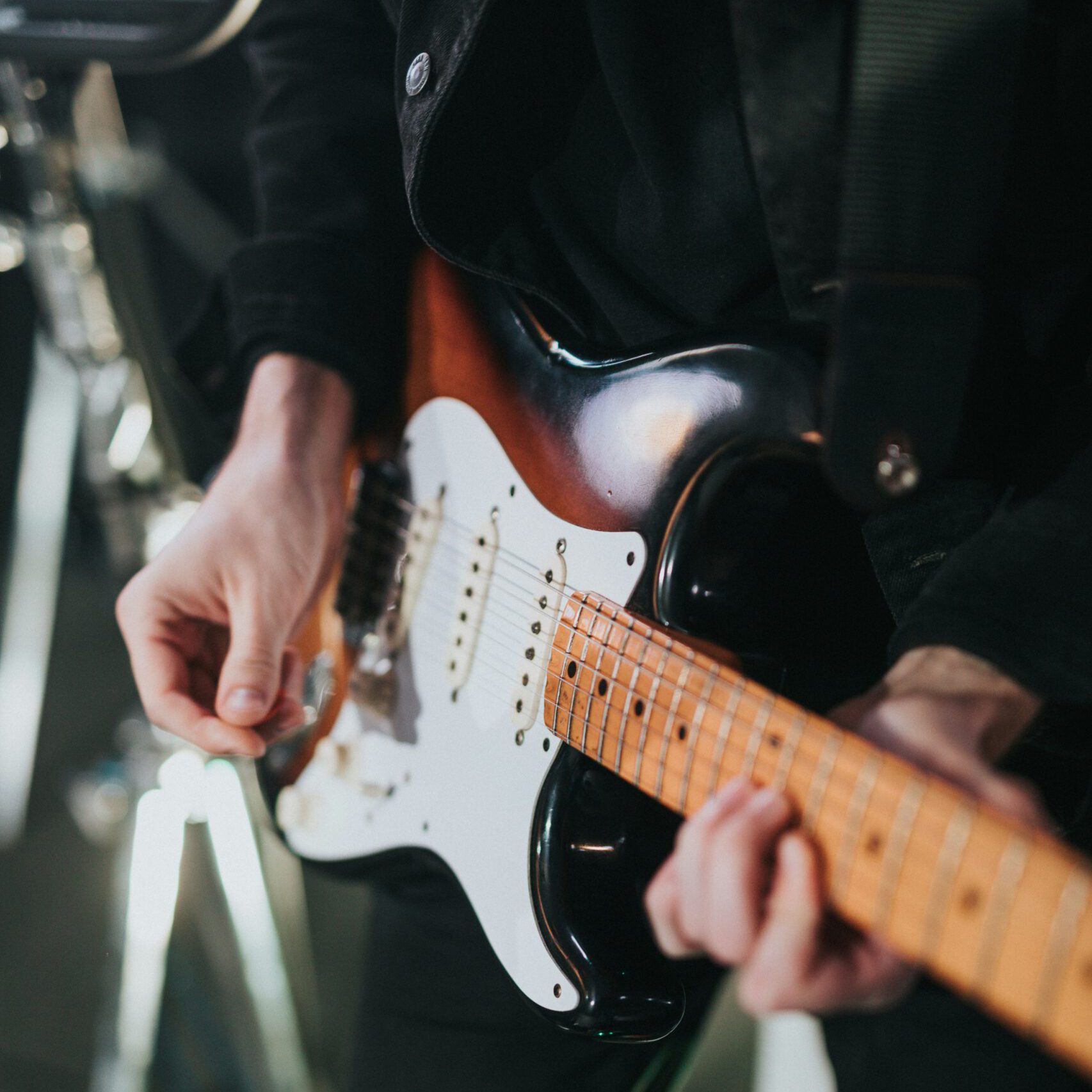An electric guitar is a guitar that usually does not have a sound box but provides volume through an amplifier with a speaker.
The vibrations of the steel strings are picked up by electromagnetic sensors (elements) consisting of magnets and coils. The disturbances of the magnetic field are converted into electric current that is led from the guitar to an amplifier via an instrument cable. This amplifier ultimately converts the electrical signal into audible sound using a loudspeaker. The shape of the guitar is hardly important for the final sound of the guitar, but all the more for the ease of playing. The less sound from the vibrating string is transferred to the ‘body’ of the guitar, the longer a string can continue to vibrate. This long sustain provides possibilities that an acoustic guitar does not have. The electric guitar often has a vibrato system installed, which allows the player to vibrate the tone of the guitar by alternately lowering and raising the tension in the strings (or vice versa).
Register for the lessons
Trial lessons
An electric guitar is a guitar that usually does not have a sound box but provides volume through an amplifier with a speaker.
The vibrations of the steel strings are picked up by electromagnetic sensors (elements) consisting of magnets and coils. The disturbances of the magnetic field are converted into electric current that is led from the guitar to an amplifier via an instrument cable. This amplifier ultimately converts the electrical signal into audible sound using a loudspeaker. The shape of the guitar is hardly important for the final sound of the guitar, but all the more for the ease of playing. The less sound from the vibrating string is transferred to the ‘body’ of the guitar, the longer a string can continue to vibrate. This long sustain provides possibilities that an acoustic guitar does not have. The electric guitar often has a vibrato system installed, which allows the player to vibrate the tone of the guitar by alternately lowering and raising the tension in the strings (or vice versa).



